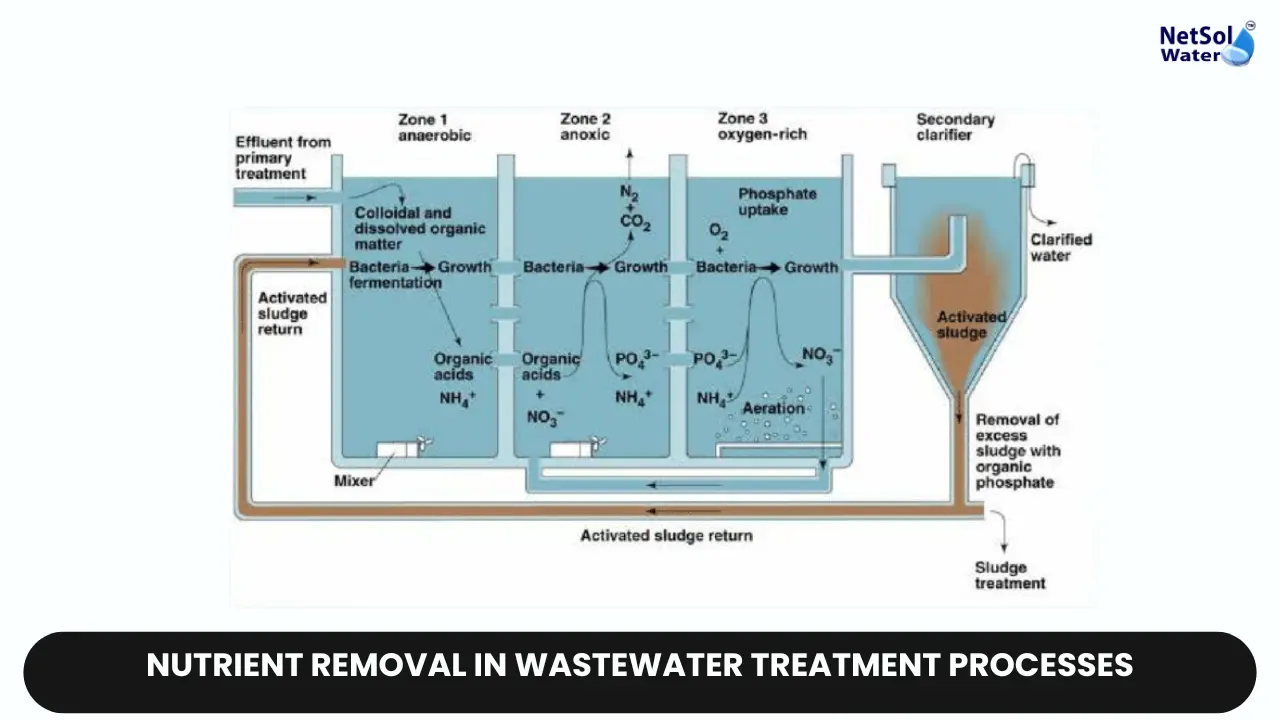While removing solids and breaking down organic matter represent the primary missions of wastewater treatment plants, advanced facilities must also concentrate on eliminating nutrients like nitrogen and phosphorus. These critical plant fertilizer ingredients, while relatively benign within water treatment streams, can wreak ecological havoc through eutrophication when discharged excessively into lakes, rivers, and coastal waters.
Nutrient overloads spur rapid algae proliferation and bacterial growth, depleting oxygen levels. This triggers impaired waterways; fish kills, foul odours/tastes in drinking water supplies, and declines in biodiversity as sensitive aquatic species struggle. Facilities must control effluent nutrient releases through targeted biological and chemical removal processes.
We'll explore the diverse mechanisms through which wastewater treatment plants achieve effective nutrient removal before discharging clean effluent back into the environment.
Nitrogen Removal Pathways
Nitrogen arrives in wastewater streams from human waste, food preparation debris, and industrial discharges predominantly in the form of ammonia and organic nitrogen compounds like proteins and urea. Multi-step processes convert these nitrogen species into harmless nitrogen gas. Biological nitrification first converts ammonia into nitrites and nitrates under aerobic conditions. Specialised nitrifying bacteria like Nitrosomonas facilitate this conversion while consuming oxygen. Aeration basins and fixed-film reactors provide ideal environments by supplying air and retaining high concentrations of these microbes as biofilms.
Then, in anoxic reactor zones, different denitrifying bacteria convert the nitrites/nitrates into inert nitrogen gas through biological denitrification, with nitrogen gas harmlessly off-gassing from the solution. This also consumes organic matter as a supplemental energy source. Some nitrogen load also assimilates into bacterial biomass before periodically wasting it out of the process during the sludge handling stages. Additional tertiary processes targeting recalcitrant nitrogen species can incorporate ion exchange or breakpoint chlorination.
Overall, comprehensive biological nitrogen removal aims to reduce influent ammonia and total nitrogen levels by 80-90% or more through modern activated sludge process optimisations.
Phosphorus Elimination Techniques
Controlling phosphorus discharge levels demands a different combination of biological and chemical mechanisms. Phosphorus enters wastewater streams from human waste, food residues, detergents, and some industrial processes predominantly in inorganic orthophosphate and organic phosphate forms.
The biological treatment represents the first line of defence. Within aerobic and anaerobic tanks, bacteria can accumulate large reserves of polyphosphates within cell biomass through luxury uptake that well exceeds their growth needs. This enhances phosphorus removals versus basic bacterial assimilation alone. Specialised biological phosphorus removal processes integrate alternating anaerobic and aerobic zones, exploiting bacteria that absorb phosphates under aerobic conditions but release them anaerobically. These anaerobic/oxic cycles get paired with strategic sludge wasting to strip out cellular phosphorus stores permanently. Supplemental metal salts further enhance removals.
However, chemical precipitation using metal salts represents the most widespread tertiary phosphorus treatment approach. Aluminium and iron salts like alum or ferric chloride convert soluble phosphates into insoluble solid precipitates that can then settle or filter out. Lime addition also forces precipitation of phosphorus into calcium salts through chemical reactions. Phosphorus adsorption onto mineral surfaces generated through coagulation assists as well.
Integrated facility designs incorporate prudent combinations of these biological and chemical phosphorus removal processes to meet discharge permit limits based on localised needs. Even basic municipal plants can often achieve 80%+ phosphorus reductions.
Conclusion
With nutrient loadings accelerating alongside population growth and urbanisation, advanced wastewater treatment plants cannot neglect nitrogen and phosphorus elimination from their process objectives. Deploying sophisticated multi-pathway nutrient removal techniques proves essential to protecting downstream ecosystems from debilitating eutrophication impacts. Wastewater nutrient discharges must be rigorously managed on par with solids, organics, and pathogens. The integration of biological nitrogen/phosphorus removals with optimised chemical precipitation and tertiary polishing tactics equips facilities to meet stringent effluent standards.
While capital and operating costs mount with each additional treatment process, the expenditures represent wise investments in preserving water resources. Enhancing nutrient removal capabilities enables treatment plants to fulfil their expanding environmental stewardship duties reliably and responsibly.
To explore customised commercial RO plants, Industrial RO plants, ETP or STP solutions for your needs in your areas and nearby regions, contact Netsol Water at:
Phone: +91-965-060-8473
Email: enquiry@netsolwater.com



